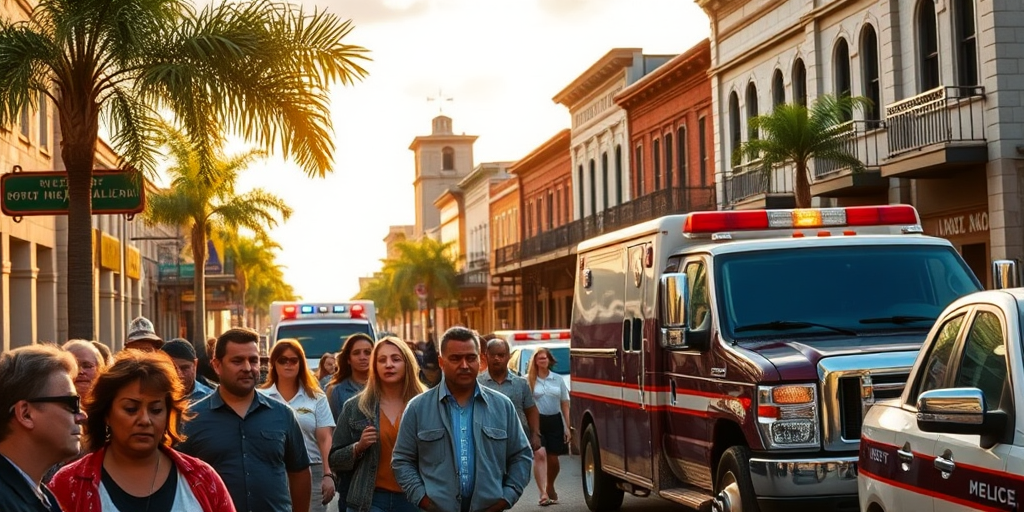McAllen Man Sentenced to 10 Years for Sending Cocaine in the Mail
Narciso Dominguez III, a resident of McAllen, has been sentenced to 10 years in federal prison after pleading guilty to participating in a substantial cocaine trafficking operation. Dominguez’s activities, which involved mailing significant quantities of cocaine across the United States, highlight broader issues of drug trafficking in the Rio Grande Valley (RGV).
The Key Details of the Case
According to the U.S. Attorney’s Office, the investigation into Dominguez revealed that he was mailing approximately 100 kilograms of cocaine daily, using elaborate packaging to conceal narcotics. Further operations uncovered even larger quantities of cocaine in his possession, underscoring the scale of his operations.
Federal authorities detailed how Dominguez utilized stash houses in McAllen to manage and package the drugs, linking him to a larger network within the South Texas region. In a notable incident, law enforcement officials recovered 43.35 kilograms of cocaine following a vehicle stop, and an additional 229 kilograms from a local residence.
“The volume of drugs trafficked by Dominguez was astonishing,” commented U.S. Attorney Nicolas J. Ganjei. “This sentencing marks a significant step in dismantling networks that funnel dangerous substances through our communities.”
Local Impact and Community Concerns
For Valley residents, the implications of such trafficking operations are profound. With drug-related activities often contributing to other criminal enterprises, communities in the RGV face heightened concerns about safety and public health.
Jessica Ortega, a community advocate from McAllen, voiced concerns typical of many locals: “Cases like these show how interconnected our region is with larger trafficking networks. It affects the security of our neighborhoods and the well-being of our young people.”
The RGV has long been a focal point for drug trafficking due to its strategic location along the U.S.–Mexico border. Efforts to curb illegal activities have been a persistent challenge for law enforcement and community leaders alike, often requiring a multi-faceted approach that encompasses prevention, enforcement, and rehabilitation.
Connections to Broader Criminal Activities
While Dominguez serves as a stark example of individual involvement, the broader network connected with trafficking operations often cooks up wider disturbances. In neighboring areas such as Alamo, law enforcement remains vigilant about ongoing criminal activities. The troubling case of Christopher Lee Soto, a murder suspect in Alamo found incompetent to stand trial, adds to the region’s unrest.
Similarly, Brownsville police are currently probing the peculiar thefts of roosters, signaling yet another layer of crime affecting local residents. These cases, while varied in nature, highlight a shared concern over criminal activities disrupting community peace.
Potential Future Implications
Dominguez’s sentencing could serve as a deterrent, displaying federal and local law enforcement’s commitment to addressing drug trafficking. However, the intricate relationship between supply routes and reception points means that authorities have much work ahead. Future efforts are expected to focus on enhancing cross-border collaboration and using emerging technologies for detection and prevention.
Residents are encouraged to communicate suspicious activities to local law enforcement. Maria Lopez, a local police officer, stresses the importance of community cooperation: “Our best successes come when residents are vigilant and proactive, helping us curb illegal operations before they grow.”
Balancing Perspectives and Looking Forward
While some emphasize punitive measures, others call for increased support for addiction treatment facilities and preventative education programs to tackle drug consumption issues at their roots. Dr. Carlos Garza, a local mental health professional, suggests integrating rehabilitation support with judicial processes: “Educating our youth alongside strict enforcement could lead to long-term reductions in demand for illicit drugs.”
As the community reflects on the impact of Dominguez’s operations, many advocate for balanced approaches that consider economic, social, and legal components. Addressing trafficking’s complexities demands flexibility and collaboration from various spheres of society, establishing pathways that foster safety and prosperity in the Rio Grande Valley.
For further information or to report suspicious activities, Valley residents can contact local law enforcement agencies. The RGV news outlet remains committed to delivering timely updates on developments and community initiatives tackling these issues. As always, the focus remains on ensuring the Valley continues to evolve as a safe, vibrant, and resilient place for its residents.







